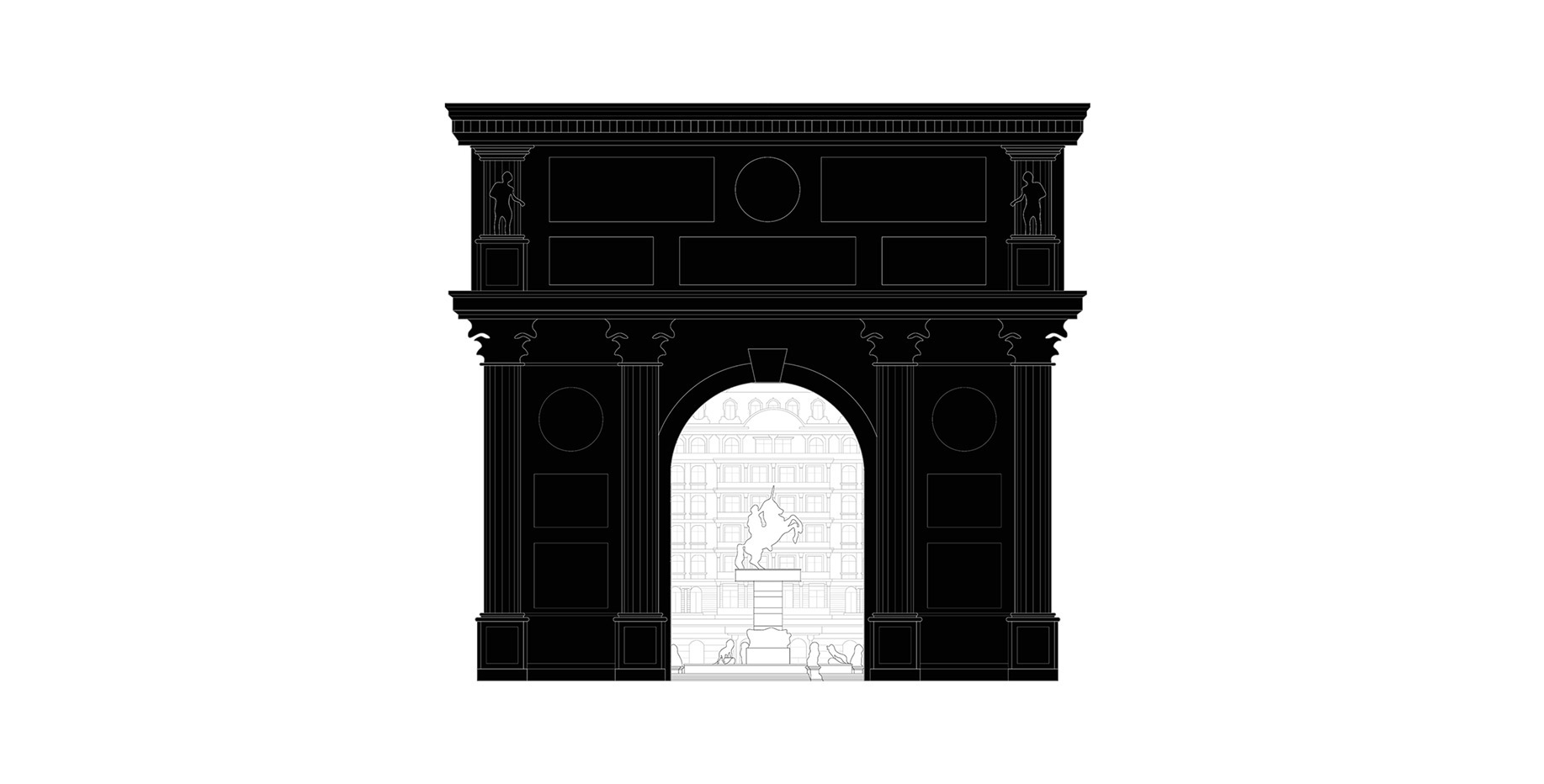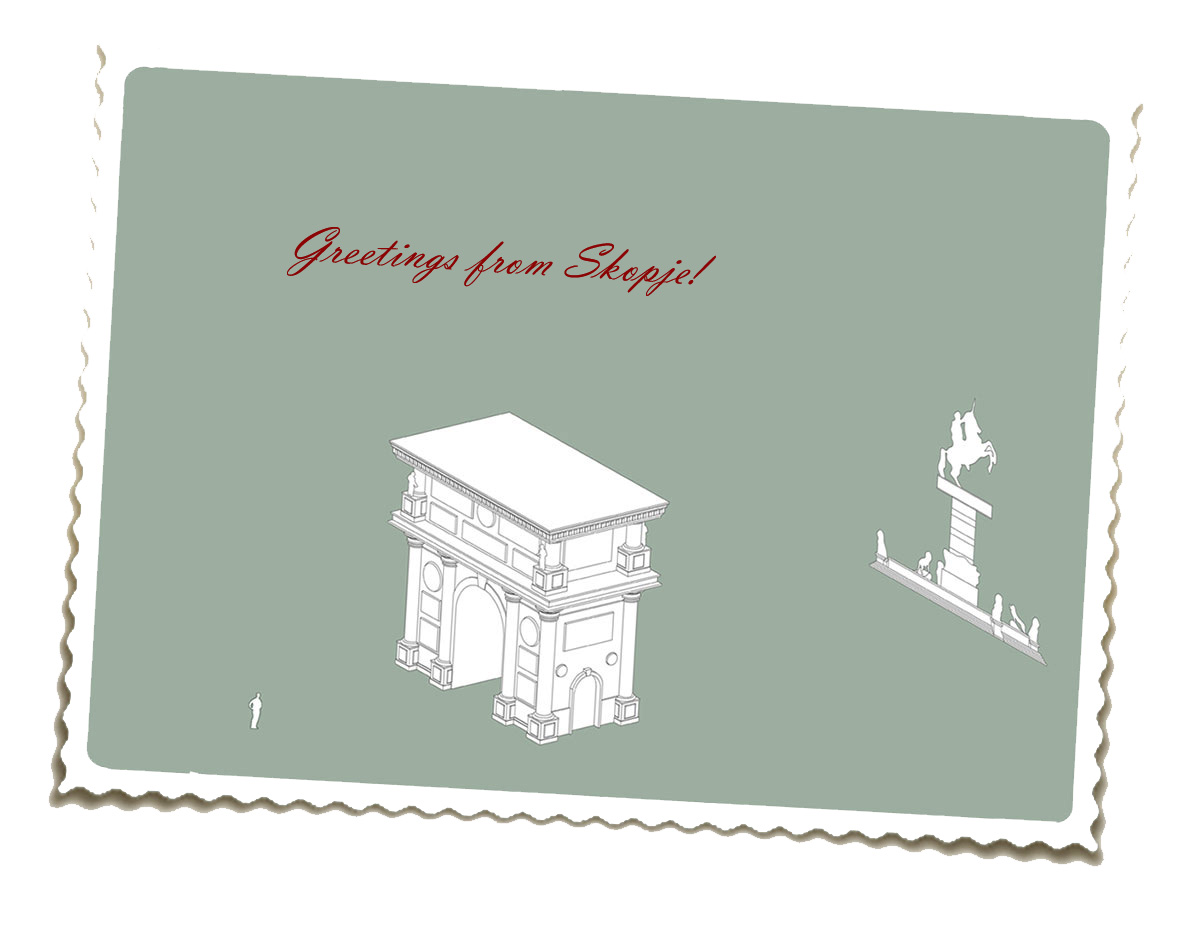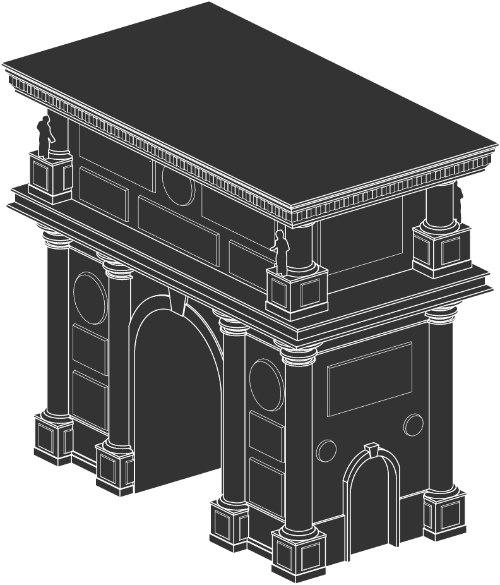Valentina Stefanovska
2012
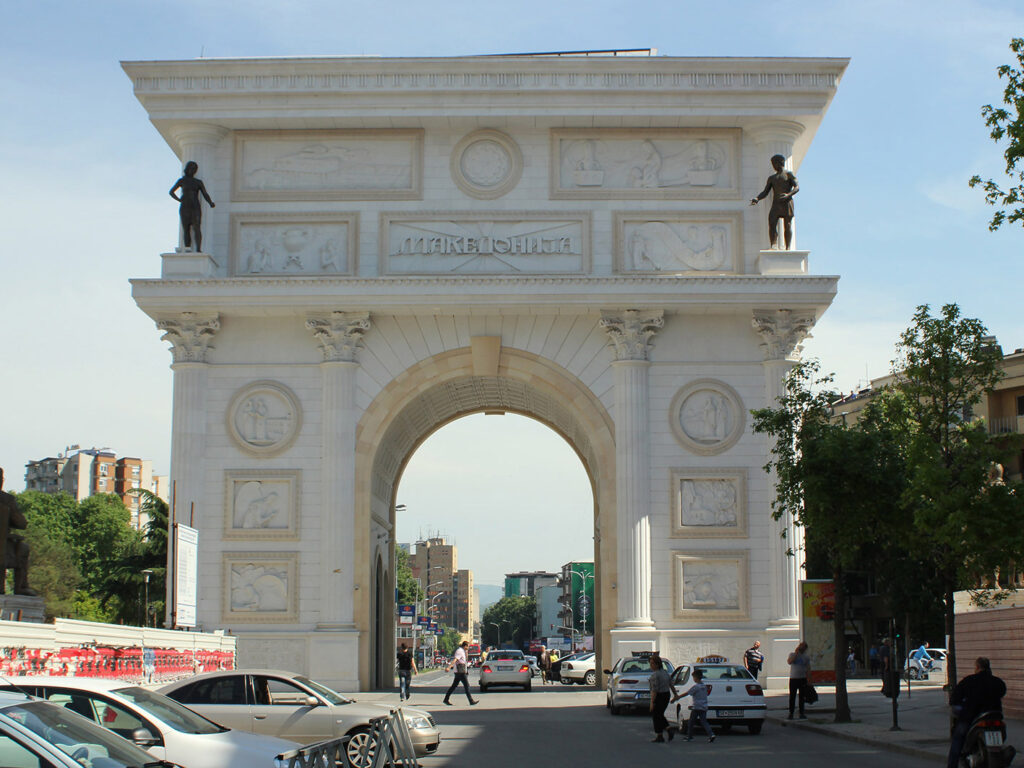
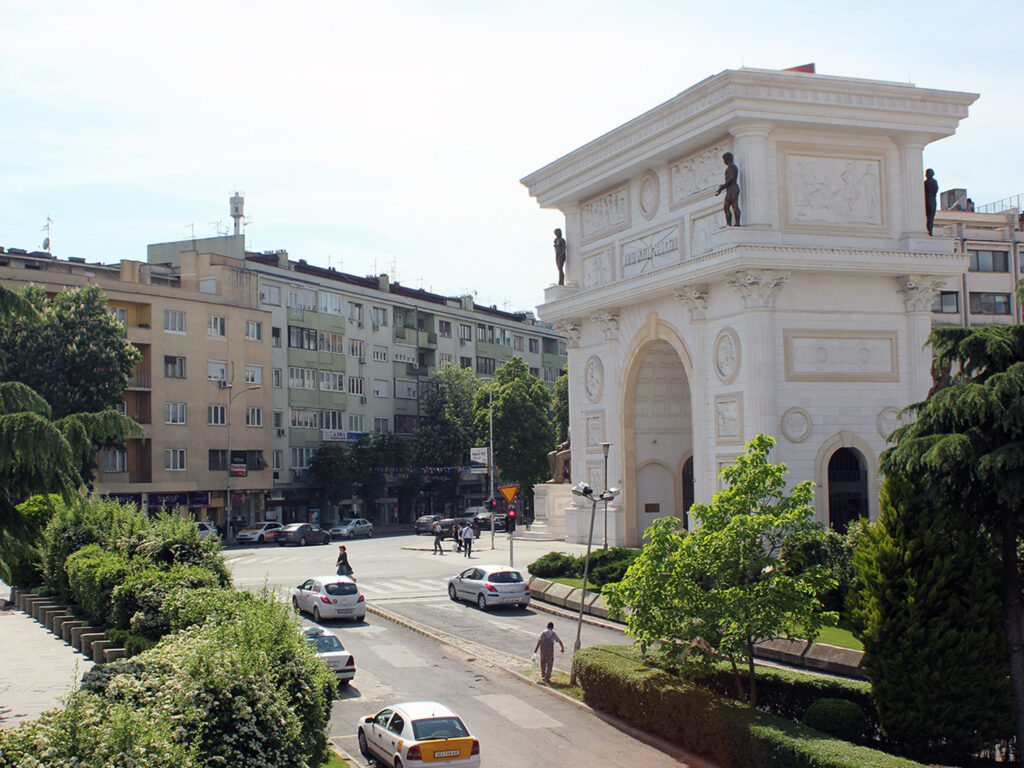
Across the building of the Assembly stands the Triumph Arc – Porta Makedonija. Right through it are the main city square and in its center the new monument – Warrior on a Horse.
The Triumph Arc, by the sculptor Valentina Stefanovska (also the author of the monument Warrior on a Horse on the main square) is a building from the architectural production of the Skopje2014 project and is only three years old. It’s one of the examples of a new building erected for the purpose of becoming an urban artefact of Skopje. Its construction started 2011 and was finished in 2012 with a height of 21 m. The client of this project – the Government of the Republic of Macedonia, together with the author, promoted it as a classical style piece.
The arc is dedicated to the 20th jubilee of Macedonian independence. Its outer surface is covered in 193 m² of reliefs, depicting historical scenes. The arc hosts a state-owned souvenir shop and a roof look out for the public.
It is designed to match the almost equally tall Warrior on a Horse monument, erected in the capital‘s central square in 2011, also a construction from the government-funded project.
Something that is very noticeable in all of the Skopje2014 buildings, the newest architectural layer of the city, are their history-telling intentions. Skopje2014 almost forcefully tries to boost and publicize an adapted version of the history of the city.
Regarding the Arc’s classical style, the architectural language being used is implying a different course of history. It appears as if there has been a time in the past when the architectural production in Skopje was speaking that chosen language, when that was not the case. In that sense, this Triumph arc is inventing history and architectural memories.
This being the case with many buildings, whose construction is densified in a short amount of time, the invention of history has a larger scale than just the Triumph arc. This building is one of many, which all together intensively promote this newly constructed course of history and thereby are denying and neglecting the existing one.
Another aspect of the Triumph arc, built in 2012, is its great resemblance of the Parisian one from 1836 (tactic borrow). It is a shrunk version of a building which comes from an entirely different socio-cultural, political, economic, etc. context, so even though they look very much alike, they cannot be a representation of the same ideals. The Triumph Arc in Skopje is not a standing representation of a triumph, it doesn’t carry that value, but it simply looks like another building that does.
The Triumph Arc also acts as a frame. Standing here, in front of the Assembly or driving along the boulevard 11ti Oktomvri, the Arc perfectly frames the new monument on the main city square. So, what we have here is a new building, looking old, framing a new monument at the end of a characteristic sight-line. Both the frame and the framed object are part of the Skopje2014 project. Behind the monument, a new hotel in a classical style is raising (also Skopje2014). These three layers together form a postcard image, which promotes the governmental project, thus promoting the newly constructed history.
To conclude, the Triumph Arc is an unoriginal new building imported from Paris, trying to mimic someone else’s historical values, while being too new to have any at all and it is framing a monument of governmental value, boosting its presence.
